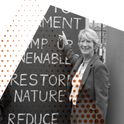On the face of it, a new nuclear power plant at Hinkley Point in Somerset—home already to two nuclear power stations, one operational and one disused—would have a lot going for it. If built, Hinckley Point C's 3.2 gigawatts capacity would generate around seven per cent of the UK’s electricity over a 60 year period, and would mean we could avoid importing equivalent amounts of natural gas. It would create thousands of high quality jobs and reduce our greenhouse gas emissions by an estimated nine million tonnes per year. By contrast, the early closure of nuclear plants in Germany looks likely to increase emissions by anything up to two billion tonnes in total, given the growth in coal use (brown and hard) as a substitute. The Hinkley project has had enviable degrees of durable political support from the very top of the governments of the UK, France and China. It is still standing despite a series of challenges thrown up by the financial crisis, the fall in wholesale power prices (notably as a result of the unexpected fall in the oil price) and the accident at Fukushima.
All this comes at a time when the problems besetting electricity supply in the UK look enormous. A huge volume of "dispatchable" generating capacity which does not depend on weather conditions will be needed relatively soon to replace plants going off line by 2030: all of our coal capacity, most of our current nuclear plants and even some of the early CCGTs (Combined Cycle Gas Turbines). Power demand itself is not growing as expected (indeed it has been shrinking), which gives us a breathing space, but not permanently. Much of the new capacity will inevitably be CCGT, but to replace all our nuclear plants in this way would bring penalties both in terms of greenhouse gas emissions and, potentially, in terms of security of fuel supplies as North Sea oil reserves decline and fracking remains politically difficult. When the full costs of using variable renewables (as opposed to the simplistic and misleading debate around "grid parity") are taken into account nuclear still looks the most economic low-carbon option.
Yet this is a project characterised so far by a series of missed deadlines. The "Final Investment Decision" has been expected for some years without it appearing.
In his foreword to the 2008 Nuclear White Paper, then Prime Minister, Gordon Brown, said: “The government has today concluded that nuclear should have a role to play in the generation of electricity. Nuclear power is a tried and tested technology. It has provided the UK with secure supplies of safe, low-carbon electricity for half a century. More than ever before, nuclear power has a key role to play as part of the UK’s energy mix. I am confident that nuclear power can and will make a real contribution to meeting our commitments to limit damaging climate change.” Wholesale power prices had well and truly recovered from the artificially lows of five years previously which had driven about 40 per cent of UK electricity generating capacity into near-bankruptcy (including British Energy, which owned and ran most of the nuclear power plants), to stand at around the £100 per MWh (megawatthour) level. Quite sufficient, if maintained into the future, to make a new nuclear project a profitable venture.
Yet eight years later—longer than it took to go from bringing four lightbulbs into flickering life with the first ever nuclear-generated electricity to the first commercial-scale nuclear power station in the 1950s—no nuclear project has been started in the UK. If Hinkley Point C does receive its go-ahead in the nearish future the goal of 16GW of nuclear new build by 2030 still looks highly unlikely.
Most of the cost of nuclear-generated electricity is accounted for by initial construction costs, where with CCGT the most important matter is the price of gas. This puts nuclear power at an immediate disadvantage within a competitive market. A CCGT project will recoup its initial investment relatively quickly. Furthermore, should the gas price, the key economic sensitivity for CCGT, increase, much of the extra cost can be passed on in higher power prices—consumers cannot go elsewhere in the short term. By contrast, if a nuclear project suffers delays and/or cost increases during construction (its key sensitivity), these extra costs cannot be passed on to consumers, who could turn to a new CCGT project which could be built while the nuclear project was still waiting. So the economic risk associated with nuclear power is both inherently higher and more difficult to pass on. A reliable carbon pricing regime and assignation of proper value to secure supplies would help, but in effect if nuclear new build is to happen then the government must find ways of transferring a significant proportion of this risk away from the investor and onto the consumer and/or taxpayer.
Considerable progress has been made in many ways in the intervening eight years. The licensing processes around new nuclear plants have been clarified, if not simplified. National policy statements confirming the government’s support for new build have been issued, sites identified and, in the case Hinkley Point, construction licenses issued. Electricity Market Reform, heralded in the 2013 Energy Act, introduced an escalating floor to the "carbon price," so that sources with low greenhouse gas emissions were valued. New coal was in effect ruled out. Capacity payments were reintroduced for generators which could offer reliable output at times of high demand. Perhaps most importantly, long-term price guarantees were introduced via "contracts-for-difference"—in effect if the wholesale power price fell below a "strike price" for each technology, the money would be topped up by power users, whereas if the wholesale price exceeded the strike price the money would flow the other way.
Therein lay a problem. Clearly there was a set of values for the strike price which would be too low to attract investment and another set which was too high to be acceptable to the users. Was there any intersection between these sets, any values that would satisfy both sides? Centrica, which had been a partner with EDF Energy in the Hinkley project, clearly decided not and pulled out in early 2013, citing other priorities and the long wait for a positive cash flow.
In October 2013 it seemed a breakthrough had been made. A strike price of £92.50 per MWh of electricity sold (index-linked to 2012 money values) was agreed between the government and EDF Energy for electricity from Hinkley Point C (reducing to £89.50 if Sizewell C is also built), to run for 35 years. The deal drew trenchant criticism from some energy analysts, notably Peter Atherton at Jeffries investment bank, who memorably described the proposed station, if it went ahead, as "the most expensive object Britain had ever built." Yet still no decision could be taken.
A year was spent demonstrating that the deal did not contravene European Union competition policy. Approval was eventually granted by the European Commission in October 2014 but subsequently drew an appeal from the Government of Austria and others. Greenpeace’s EU Legal Adviser, Andrea Carter, said: “This is a bad plan for everyone except EDF.” Still no decision could be taken.
In September 2015 the UK government released the first £2bn of loan guarantees: the following month China General Nuclear (CGN) came on board with a pledge to fund one third of the cost of the project. Still no decision could be taken.
By now very little about the project itself seemed unclear. All the major site and technology licenses, a guaranteed income, load guarantees, a major financial partner. It was becoming clear that the uncertainties preventing a decision now lay within EDF itself rather than the project.
The company’s finances were under considerable strain. It had debts of €37bn (£28bn) and its share price has fallen from €29 in April 2014 to below €10 by March 2016. It was facing a bill of at least €55bn for upgrading its nuclear power stations in France on top of ongoing running costs. It had also agreed, under government encouragement, to buy between 51 and 75 per cent of the struggling French reactor builder Areva NP which was valued at €2.7bn. Areva’s other EPR design nuclear projects in Europe, at Flamanville in Normandy and Olkiluoto in Finland, are woefully over budget and behind schedule, though the pair being built at Taishan in China seem to be doing rather better. The French waste agency Andra estimated that the cost of deep geological disposal of French nuclear waste could be as high as €30bn rather than the €20bn estimated by EDF. It was clear that the trade unions which held seats on the EDF board were deeply uncomfortable about the project, arguing that the debt related to Hinkley Point C would need to be 100 per cent consolidated into the EDF accounts, an amount exceeding the market capitalisation of the Group (which is around €20bn). The resignations first of Executive Director of nuclear new build, Chris Bakken, then of Group Finance Director Thomas Piquemal, did little to reassure anyone about the health of the project. Among those critical of the scheme were a number of high profile environmentalists, such as George Monbiot, Mark Lynas and Chris Goodall, who had very publicly declared their support for nuclear new build as an aid to fighting climate change.
In March, EDF head Jean-Bernard Levy wrote to EDF staff: “We are currently negotiating with the French state to obtain commitments allowing us to secure our financial position. I am sure that this project is a good project for the group and that in the near future, all the conditions will come together for it to be definitely launched [but] it is clear that I will not engage EDF in this project before these conditions are met.” Economy minister Emmanuel Macron responded positively, saying that the French government stood by the project and would be willing to recapitalise EDF if needs be.
Apart from any other considerations, to go back to the drawing board at this stage would inevitably introduce yet another delay in what is already a very tight timescale if current nuclear capacity is to be replaced by new build in an orderly way. The various candidates for Plan B: bring forward one of the other nuclear projects planned for north Wales or Cumbria, find another option for the Hinkley Point site, wait until small modular reactors (SMRs) are ready, whenever that might be (the government has offered considerable finance for research in this area but the concept remains largely untested in the commercial sphere), or surrender the fight and commit ourselves to even more gas imports. None looks particularly feasible or attractive at present.
Perhaps it is time for government to take back unequivocal responsibility for the fuel mix (though operation could still be done through a competitive market). Nuclear at public sector rates of return looks much more attractive even at Hinkley’s capital costs. It is not of course certain that government would be any more reliable as a long-term partner to nuclear construction companies than the current short-term market is. But the Hinkley C saga implies that the present approach does not work: the market simply does not seem able to send firm signals to invest in enough dispatchable low carbon capacity even with the levels of support now on offer. The current model may be incompatible with nuclear fulfilling its potential for reducing both greenhouse gas emissions and dependence on imported fossil fuels.
Hinkley Point C: When it comes to nuclear power, the state should take control
"The market is simply not able to send firm signals to investors"
March 22, 2016

A small police presence near an inflatable elephant with a respectful message addressed to the Chinese President Xi Jinping, saying that EDF's Hinkley Point C nuclear power station would be "a bad investment" for the Chinese state, which has bee











